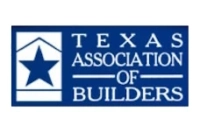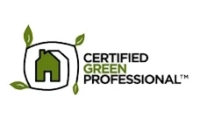Is Stucco a Good Building Product to Use in Houston, Texas?
Understanding the Stucco Process
Stucco is a popular choice for custom homes in Houston, Texas, due to its aesthetic appeal. It is especially popular in Tuscan, Mediterranean, European, French Country, and Modern architectural design. There are a handful of stucco methods. In this article we will focus on the traditional 3-step stucco process. To determine if it's the right fit for your project, it's important to understand the traditional 3-step stucco process and how it holds up in Houston's humid subtropical climate.

Water Resistive Barriers and Stucco Rainscreens
All stucco applications require two Water Resistive Barriers (WRB’s). The first WRB is generally a house wrap or a wood structural panel with an integrated air and water resistive barrier. The Huber Zip System have popularized the latter. Both approaches are acceptable, and it is critical that all windows, doors, and exterior penetrations are flashed and sealed prior to moving on to the second WRB.
The second WRB is in the form of black building paper or a rainscreen system approved for use as a Water Resistive Barrier (WRB).
Houston averages 50” of rainfall per year. The 2021 IRC has ingrained stucco rainscreens in the International Residential Code for homes built in the Houston area. Rainscreens create an air gap between the first WRB and the stucco system. This gap encourages moisture that gets behind the stucco system to dry out or drain out the bottom of the stucco system.
The 3-Step Stucco Process Explained
1. Scratch Coat: The first layer, called the scratch coat, is applied directly to the prepared surface (such as a lath for stick frame construction or masonry and CMU wall construction). This layer is usually about 3/8" thick and is "scratched" with a tool to create grooves that help the next layer adhere better.
2. Brown Coat: The second layer, known as the brown coat, is applied on top of the scratch coat. This layer is also about 3/8" thick and is designed to provide a smooth, even surface for the final layer. It's called the brown coat because of the traditional color of the sand and cement mixture used, though the color can vary.
3. Finish Coat: The final layer is the finish coat, which is typically about 1/8" thick. This coat provides the final texture and appearance of the stucco, and can be smooth or textured, with various color options available.
This 3-step process is crucial for creating a durable, long-lasting stucco finish that can withstand the elements, particularly in a climate like Houston's.
Sealing Penetraitons
Stucco is surprisingly water resistant. However, it is critical to minimize the amount of water that gets behind the stucco system. Use your stucco mason or hire a waterproofing contractor to seal all your exterior penetrations (hose bibs, exterior lights, outlets, etc.). The seals around these penetrations should be maintained throughout the life of the home.
Advantages of Stucco in Houston
Durability
Stucco is renowned for its durability, particularly when applied using the traditional 3-step process, which results in a finish that is approximately 7/8” thick. This cement-based thickness provides long-lasting protection against Houston's challenging weather conditions, making it a reliable choice for your home. To fully benefit from stucco's durability, it's essential to have it installed by a contractor with expertise in this method.
Aesthetic Appeal
Stucco offers remarkable versatility in appearance, making it a popular choice for homeowners who value aesthetics. Whether you prefer a smooth or textured finish, stucco provides unlimited color options, allowing you to tailor your home's exterior to your vision.
Fire Resistance
One of the significant advantages of stucco is its fire-resistant properties, which add an extra layer of safety to your home. This feature is particularly beneficial in providing peace of mind.
Low Maintenance
When installed with proper drainage provisions, stucco proves to be a low-maintenance option. A light power wash is often all that's needed to keep it looking fresh.
Flexibility
Stucco offers flexibility when it comes to future updates. If you ever decide to change your home's color, stucco can be easily repainted, making it a practical option for those who like to keep their exterior appearance up-to-date.
Challenges of Using Stucco in Houston
Humidity and Moisture Concerns
Houston's humidity presents challenges for stucco, but these can be mitigated by installing a rainscreen that meets current building code requirements. This is installed behind the stucco and on top of the first water-resistant barrier (WRB).
To ensure this critical step is executed correctly, it's important to work with a stucco contractor who is well-versed in local building practices and understands how to protect your home from moisture-related issues.
Installation Quality
The quality of your stucco installation is critical. Using an experienced stucco contractor who follows the traditional 3-step process is essential.
Thorough stucco phase inspections will help avoid potential issues down the road and ensure that your stucco finish stands the test of time.
Potential for Cracking
Stucco, being a cement-based product, naturally carries some risk of cracking. Common causes include improper fastening, insufficient gaps between sheets of sheathing, and moisture intrusion.
These risks can be significantly minimized with careful attention to detail and proper installation techniques. It's crucial to work with a stucco mason who is proficient in the traditional stucco process, ensuring that your stucco is applied correctly and stands the test of time.
Comparing Stucco to Other Materials
Brick
Brick is a classic choice for home exteriors, known for its durability and timeless appeal. Unlike stucco, brick requires a brick ledge—an additional structural element that supports the weight of the bricks. This can add complexity and expense to the construction process.
While the cost of standard brick is comparable to stucco, the price can increase significantly if you opt for antique or modular-sized bricks, which are often sought after for their unique aesthetic qualities.
Brick tends to have a more uniform, traditional look, whereas stucco offers more flexibility in texture and color.
Full Thickness Stone
Full thickness stone is the most expensive of the common exterior materials, offering a distinct and luxurious appearance that is hard to match. Like brick, it also requires a brick ledge and must be installed by a skilled stone mason.
The labor-intensive process and the cost of materials make it a premium option. Stone is incredibly durable and provides a natural, earthy look that can add significant value to your home.
The investment is considerably higher than stucco, both in terms of material and labor costs. While stucco provides a similar level of durability, it does so at a lower cost and with more design flexibility.
Fiber Cement Siding
Fiber cement siding is a popular alternative for those seeking a more budget-friendly option. It typically comes in either smooth or wood grain finishes and needs to be painted, which can add to the maintenance over time.
Fiber cement siding is generally the most cost-effective option among the materials discussed, making it an attractive choice for homeowners looking to balance aesthetics with budget.
It's important to note that some subdivisions have masonry requirements, and fiber cement siding may not meet these criteria. Unlike stucco, which is often considered a masonry product, fiber cement siding may not provide the same level of durability or aesthetic appeal, particularly in areas with stringent building codes.
Best Practices for Stucco Installation in Houston
Proper Installation Techniques
For stucco to perform well in Houston's challenging climate, following proper installation techniques is absolutely critical. The traditional 3-step stucco process remains the gold standard. This process starts with the application of a scratch coat, followed by a brown coat, and finishes with the final stucco layer.
It’s essential to install water-resistive barriers (WRB) before applying the stucco. The first WRB serves as the primary defense against moisture infiltration, while the second adds a layer of protection. A rainscreen creates a gap between the stucco and the WRB, allowing any trapped moisture to escape and preventing water damage. This step is crucial in preventing issues like mold growth and stucco deterioration, particularly in Houston’s humid climate.
Maintenance Tips
Stucco is relatively low maintenance, but to keep it in optimal condition, regular upkeep is necessary. A yearly light power washing is recommended to remove dirt, dust, and mildew that can accumulate on the surface. It’s important to use a low-pressure setting to avoid damaging the stucco.
In addition to power washing, it’s vital to inspect and maintain the caulking and sealing around all penetrations, such as windows, doors, and any areas where different materials meet. Over time, caulking can crack or deteriorate, leading to potential water intrusion. By regularly checking these areas and reapplying caulking as needed, you can prevent moisture from getting behind the stucco, which is a common cause of damage.
It's important to regularly inspect the finish for any cracks or signs of wear. While small hairline cracks are normal, larger cracks can indicate underlying issues. If you notice significant cracking, it’s advisable to consult with a professional who can assess the situation and recommend appropriate repairs.
Finally, if you decide to repaint your stucco to refresh its appearance, make sure to use high-quality, breathable paint designed specifically for stucco surfaces. This allows moisture to escape from the walls, reducing the risk of trapping moisture that can cause damage.
Empowering Your Owner-Builder Journey with Built Green Custom Homes
At Built Green Custom Homes, we are experts in custom home building, with a deep understanding of the specific needs and challenges of stucco installation in Houston. We provide the tools and resources you need to make informed decisions about your building materials, including stucco.
Our services are designed to support you throughout your owner-builder journey. We offer Free Building Classes where you can learn from industry experts about best practices in home construction, including selecting and working with materials like stucco.
For those needing financial assistance, our Owner Builder Financing options are tailored to help you secure the funding necessary to bring your vision to life.
Additionally, our detailed building schedules keep your project on track, ensuring that each phase, including critical stages like stucco application, is completed efficiently. Our comprehensive construction manuals serve as detailed guides, walking you through every step of the construction process and emphasizing the importance of proper stucco installation.
Don’t leave the success of your custom home to chance—partner with Built Green Custom Homes and build smarter, not harder. Let us help you achieve a home that stands the test of time, both in durability and value.
Contact us today to start your journey towards creating the home of your dreams. Your future home awaits—let’s build it together.
Frequently Asked Questions
Is stucco suitable for Houston’s humid climate?
Yes, stucco can be a great choice for Houston’s climate if installed correctly. The key is to ensure proper installation of water-resistive barriers (WRBs) and a rainscreen system to manage moisture effectively and prevent water-related issues.
How often does stucco need maintenance in a humid environment like Houston?
Stucco in Houston should be inspected annually and given a light power wash to remove dirt and mildew. It’s also important to regularly check the caulking around windows, doors, and other penetrations to ensure there are no gaps that could allow moisture to seep in.
What are the risks of using stucco in Houston, and how can they be mitigated?
The primary risks include moisture intrusion and cracking. These can be mitigated by ensuring a high-quality installation with proper sealing of all penetrations and the use of a rainscreen to allow moisture to escape. Regular maintenance and inspections also help prevent long-term damage.
How does stucco compare to other exterior materials in terms of cost?
Stucco is generally comparable in cost to brick but less expensive than full-thickness stone. While it requires a skilled mason for proper installation, the long-term benefits in durability, aesthetics, and low maintenance can make it a cost-effective choice for many homeowners.
Can stucco be repainted if I want to change the exterior color of my home?
Yes, stucco can be easily repainted, which offers flexibility if you want to update your home’s exterior appearance. It’s important to use high-quality, breathable paint specifically designed for stucco to avoid trapping moisture inside the walls.
What should I look for when choosing a contractor to install stucco?
Look for a mason with experience in the traditional 3-step stucco process and who understands the specific challenges of Houston’s climate. Ensure they are familiar with the installation of WRBs and rainscreens, and check references or reviews to confirm their expertise.
Why are rainscreens important in stucco installation?
Rainscreens create a gap between the stucco and the water-resistive barrier, allowing any moisture that gets behind the stucco to escape. This is crucial in preventing moisture-related issues, such as mold or stucco deterioration, especially in Houston’s humid environment.
How does stucco’s fire resistance compare to other materials?
Stucco offers excellent fire resistance, which can add an extra layer of safety to your home. This makes it a preferred choice in areas where fire safety is a concern, providing peace of mind alongside its aesthetic and structural benefits.
What are the common causes of stucco cracking, and how can they be prevented?
Common causes of stucco cracking include improper fastening, insufficient gaps between sheathing sheets, and moisture intrusion. These issues can be minimized by ensuring that the stucco is applied correctly by a skilled mason who follows best practices.
Is stucco considered a sustainable building material?
Stucco is considered relatively sustainable, especially when applied correctly and maintained over time. Its durability reduces the need for frequent repairs or replacements, and it can contribute to the energy efficiency of your home, particularly when paired with proper insulation.
Questions? Comments? Contact Us for more information


 Free Building Classes
Free Building Classes




